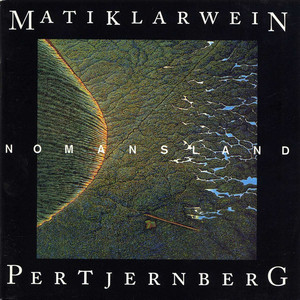
No Mans Land
- 流派:World Music 世界音乐
- 语种:英语 德语
- 发行时间:2010-04-09
- 唱片公司:Rub-a-Dub Records
- 类型:录音室专辑
- 歌曲
- 时长
-
Component 1
简介
MATTHIAS KLARWEIN was born in 1932 in Hamburg, Germany; the story of how he became the counterculture's artist-in-residence is due in part to the rise of Nazism. On Hitler's accession to power, his Jewish parents fled with Mati to Palestine. An early ambition to direct movies in Hollywood came to nothing, and instead he travelled to Paris to study under the French painter Fernand Leger. Naturally, France introduced him to the artistic and showbiz milieu that was shaping up in the capital and on the Riviera. One of his most influential meetings was with Salvador Dali: "I read Dali's Private Life Of Salvador Dali when I was 20 years old," he says, "and I have never been the same person since. I met him at the age of 30 for the first time, and we saw each other regularly in New York and Paris during the 60s and early 70s. He was my spiritual father, and some even thought I was his illegitimate son. We were also each other's pimps and cultural spies." Dali's decadent years as both king and court jester to rock stars, models and assorted hippy loons have been well documented by those who were either there at the time or wish they had been, "(Dali) hated music," is Mati's version of events. "He hung out with rock stars because of their fame and/or genius. He believed that there are three things that cretinize us humans: love, children and music. Just look at my life and you'll see that the proof is in the pudding." As a young man, Mati became the travelling companion of an unnamed but wealthy woman with whom, as he rather grandly puts it, "I didn't leave one stone unturned; every electron that I ran into changed my life production drastically". It was perhaps during these nomadic years, passing through Tibet, India, Bali, North Africa, Turkey, Europe and the Americas, that he became saturated with the different landscapes, both inner and outer, that twist and writhe over his canvases. Once he had fetched up in New York's art scene in the early 60s, he began synthesising all these impressions into his distinctive, huge tantric paintings, aided by the surrounding climate. "Of course Sun Ra was part of it, and so was 'droogs', as Dali would call them. One of the achievements of the 60s spirit, besides ecological awareness, was the elimination of the 'either-or' mentality, and the birth of rhizomatic reasoning as postulated by Deleuze, Castaneda and Leary. And the battle isn't over yet!"

